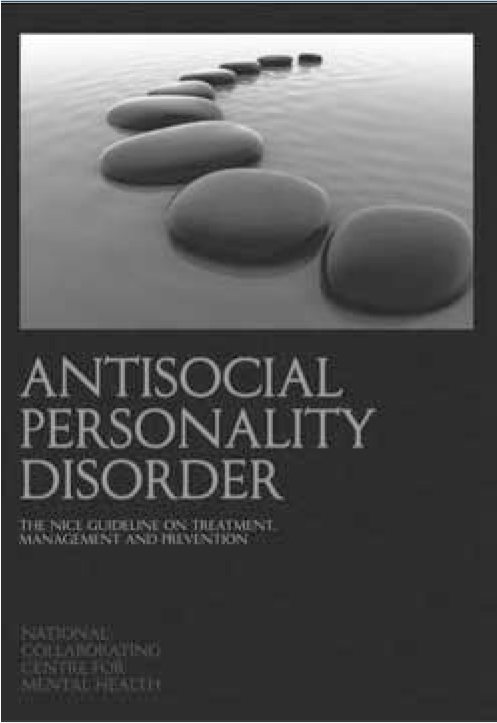
Having read the National Institute for Health and Clinical Excellence guidance on antisocial personality disorder and found it provided more questions than answers, I was unsure what this text would add to my understanding. The book, however, is surprisingly interesting and helpful. The discussion around the available evidence and scope of the guidance addressed many of the ethical concerns I had about treatment of the condition under compulsion and interventions aimed at preventing its development.
The first three chapters give a background to antisocial personality disorder and the methods used to develop the guideline. The following chapters lay out the guidance in detail along with the evidence on which it is based. In particular, the second chapter (which gives an overview of the condition, its history and diagnosis) provides a fascinating review of the relationship between offending behaviour and antisocial personality disorder. The chapters directly addressing the clinical guidance are a heavy read and at times difficult to follow, but they give useful summaries on the outcomes of studies on which the guidance is based. The accompanying CD–ROM covers some of the statistics in more detail, for those with a more mathematical persuasion than me.
As the evidence for effective interventions in adulthood is fairly weak, there is a focus on prevention, risk assessment and engagement with services. This book will mainly be of interest to those working in forensic psychiatry, but the chapter on interventions for children and adolescents (on which the guidance focuses heavily) will also be important for child and adolescent psychiatrists. The chapter on risk assessment gives an extremely useful account of the use and limitations of actuarial and clinical risk assessment. This will be of use to trainees starting a forensic placement.
Overall, the guidelines themselves highlight the uncertainty in the treatment of antisocial personality disorder. This text is enlightening as to the development of guidelines for the treatment and management of a controversial condition, which presents a challenge to psychiatrists and society as a whole.



eLetters
No eLetters have been published for this article.